The Symphonic Debutante Piccolo: Was It Really Beethoven’s Fifth?
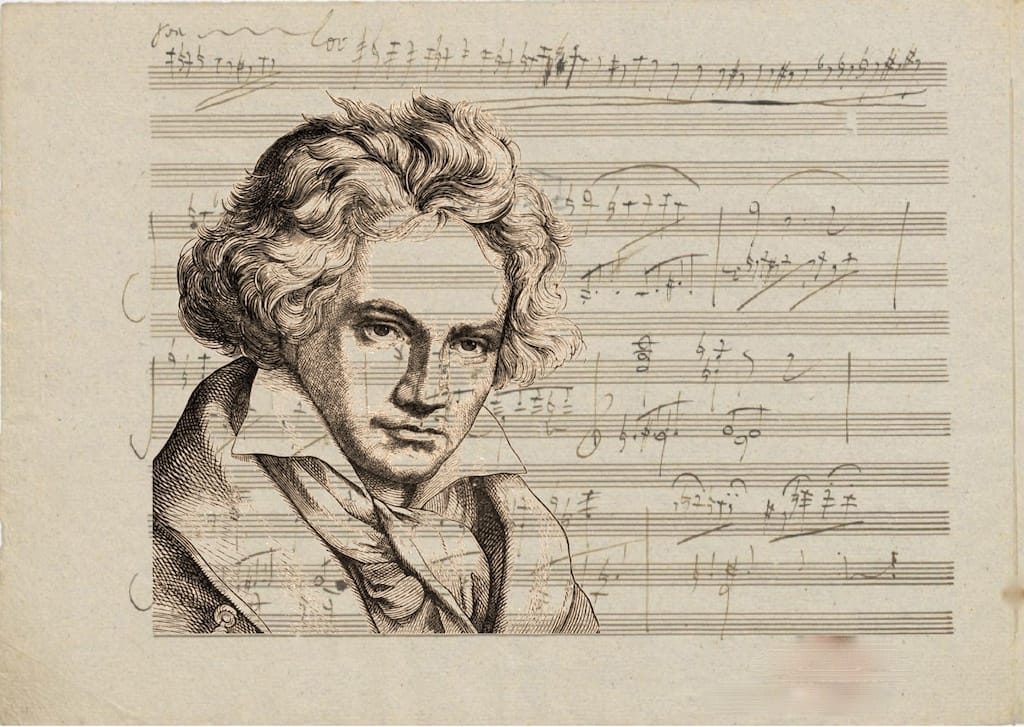
Literature declaring the piccolo’s grand entrance into the symphony is widespread. Sharing debutante status with the trombones and contrabassoon in the triumphal final movement of Beethoven’s Fifth Symphony, the piccolo’s arrival at the doorstep of music’s Great Western Canon in such an iconic masterpiece is celebrated in an almost cult-like manner. Consider the following texts from some American orchestras’ programme notes. Susan Key for the Los Angeles Philharmonic (2005) writes:
The effect of this [final] movement [of Beethoven’s Fifth Symphony] is heightened by the addition for the first time in orchestral music of piccolo, trombones, and contrabassoon which extend the orchestral range and add conviction to the musical exhaltation.1
Don Anderson for the Arkansas Symphony Orchestra (2005) writes:
Beethoven gives extra color and solidity to this exhilarating finale (which includes a reprise of the main scherzo theme) by bringing piccolo, trombones and contrabassoon into the symphonic orchestra for the first time.2
Steven Ledbetter for the Oklahoma City Symphony (2005) declares:
It is here [the end of the third movement of Beethoven’s Fifth Symphony] that we begin to approach the light, moving through darkness of the linking passage between the movements to a glorious sunburst of C major opening the finale … And as if to celebrate this achievement, Beethoven even enlarges his orchestra with the addition of a piccolo on the top and three trombones on the bottom —the first time either instrument appeared in the symphonic repertory.3
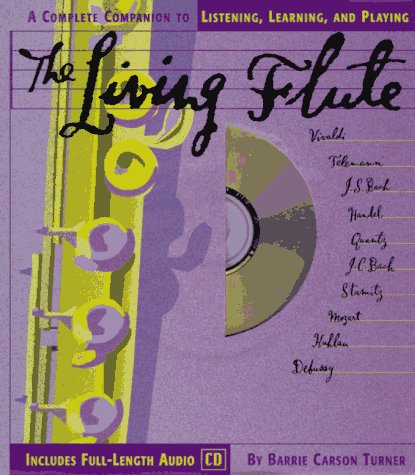
Some recent publications such as Max Wade-Matthews’ The World Encyclopaedia of Musical Instruments (2005) and Barrie Carson Turner’s The Living Flute (1996) likewise refer to this historic moment of the piccolo. “One of the first composers to write regularly for the piccolo was Beethoven, who used it in his Fifth and Sixth Symphonies.”4 “Vivaldi was one of the first composers to write for the piccolo*, but it was Beethoven who first introduced the piccolo into the modern orchestra by scoring it in his Fifth and Sixth Symphonies.”5
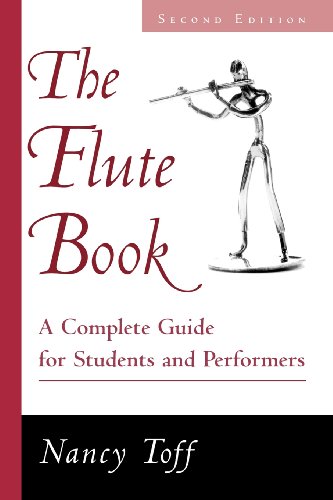
Also supporting this information is flute historian, Nancy Toff who in The Flute Book (1985) writes:
When the piccolo first made its debut in the symphony orchestra in the early nineteenth century it had two rather straightforward functions.The primary one was to extend the upper range of the woodwind choir, and specifically that of the flute. And so the piccolo, which was able to cut through the sound of the entire orchestra, was often given the melody, while the flute played harmony in a lower octave. Beethoven was the first major composer to use the piccolo in a symphony—the Fifth.6
Even piccolo scholar, Zart Dombourian Eby in her dissertation, The Piccolo in the Nineteenth Century (1987), while briefly mentioning earlier uses of the instrument, likewise focuses upon Beethoven. “Commonly used in opera and ballet throughout the eighteenth century, the small transverse flute, or piccolo, was introduced to the symphony orchestra in 1807, in Beethoven’s Fifth Symphony.” 7
And most recently and definitively in Jan Gippo’s The Complete Piccolo: A Comprehensive Guide to Fingerings, Repertoire, and History, [2007], Therese Wacker states: “Although Rossini wrote extensively for the piccolo in his operas, Beethoven was the first composer to actually write for the piccolo in a symphony, making use of the piccolo in both his 5th and 9th symphonies. and the Egmont Overture.”8
However, in 1990, Anthony Parsons of the British Trombone Society, in Symphonic Birth-Pangs of the Trombone, points out an interesting fact that alters the actual chronology of the appearance of the trombones, and thereby also the piccolo, on the symphonic stage. As he reports:
The Akademie:
The concert of Beethoven’s music at the Theater an der Wien began at 6:30 on the evening of December 1808, and the programme was advertised in the Wiener Zeitung thus:
All the pieces are . . . entirely new, and not yet heard in public.
First Part
- A Symphony, entitled ‘A Recollection of Country Life’ in F major (no. 5)
- Aria
- Hymn with Latin text, composed in the church style with chorus and solos
- Piano concerto played by himself
Second Part
- Grand Symphony in C minor (no. 6)
- Sanctus with Latin text in the church style
With chorus and solos:
- Fantasia for pianoforte alone
- Fantasia for the pianoforte which ends with the gradual entrance of the entire orchestra and the introduction of choruses as a finale. By 10:30 it was all over.
To put the record straight then, although the books correctly record the advent of the symphonic trombone section in Beethoven’s Fifth Symphony, and leave you thinking “What a fantastic moment! If only I could have been there,” the sound was actually first heard (well, the alto and tenor trombones as well as the piccolo) in the Sixth Symphony.9
Thus the celebrated notion of this triumphal entrée of the piccolo in Beethoven’s Fifth Symphony becomes significantly diminished by the previous, and a little less spectacular, appearance, on that evening of premières, just a few sustained high notes on the piccolo, representing the winds of the storm in the Pastoral Symphony.
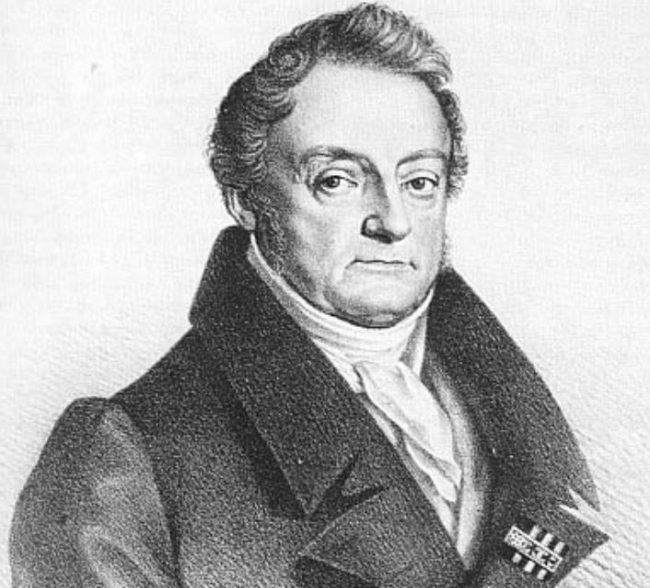
Count Waldstein
However, what came to be known later as Beethoven’s Sixth Symphony is not the only orchestral composition to disrupt the claim of Beethoven’s Fifth Symphony as the symphonic origin for the piccolo. Predating his own sixth and fifth symphonies are Beethoven’s Musik zu einem Ritterballet (1790, originally ascribed to his patron, Count Waldstein), three of the Twelve Minuets (1795) and four of the Twelve German Dances (1795).10 Yet while these Beethoven works are clearly orchestral, they are not actually ‘symphonies’.
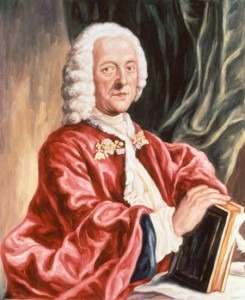
Georg Philipp Telemann
In 1765, Georg Philipp Telemann (1681-1767) composed the Grillen-Symphonie (Cricket Symphony) for string orchestra with basso continuo and three soloists: an oboe, a chalumeau (a low-pitched ancestor of the clarinet) and a “flauto traverso oder à l’octave.” It would seem then that the highest part of this concerted “symphony” was composed for a baroque-styled transverse flute with the suggestion and full permission for it to be played an octave higher on a tiny traverso. Years earlier, Telemann, when he visited Paris in 1737-38, more than likely experienced the sounds of a pair of small transverse flutes at the octave supplying dance music for the latest new Rameau opera. At the same time, travelling and emigrant French flutists like Pierre-Gabriel Buffardin (1690-1768) likewise could have been responsible for bringing the tiny traverso into use in Dresden and other German cities as far north as Telemann’s own Hamburg. However, Telemann’s charming Cricket Symphony is only a three movement work and with its pre-sonata form structure of the first movement, this little orchestral gem might not actually qualify as a “symphony” in the strictest of classical definitions in order to dislodge Beethoven’s Fifth as the piccolo’s first “symphony”.
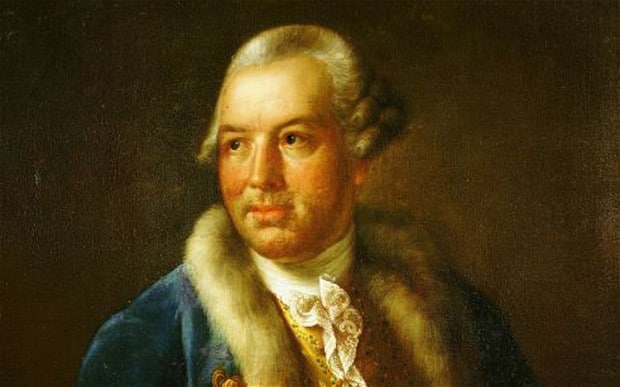
Christoph Willibald Gluck
While tiny traversos (or baroque piccolos), were regular members of French eighteenth century operas and the massive concert bands emerging from the French Revolution, their entrée into the classical orchestra seems to be the result of their use in playing the shrill, top line of Janissary (or Turkish) band music. Operatically, Gluck’s Iphigenie en Tauride (1769), Mozart’s Abduction of the Seraglio (1782) and Monostatos’ aria in The Magic Flute (1791) are typical operatic examples of its use.11 Of course, the most famous example of this practice in an actual “symphony” is the finale to Beethoven’s Ninth Symphony (1823).

George Druschetzky
Georg Druschetzky (1745-1819) oboist, composer and military timpanist from Linz, is perhaps best known for his orchestral works that include six to eight timpani. In the 1770’s he composed the four movement Sinfonia Turcia in C Major for orchestra which includes “due flautini” (two small flutes). These two little flutes are G transposing, thus pitched halfway between the concert flute and the modern piccolo (as is likely the flautino in Mozart’s Abduction of the Seraglio). A performance of this symphony on modern instruments without these G treble flutes is problematic. Transposing the parts up for two modern flutes places the tessitura in a very bright, penetrating range much of the time, which tends to overstate the presence of the flautini lines, creating a lack of balance in the orchestral texture. However, transposing the parts downward for modern piccolos not only ends up with notes below the range of the instruments, but also does not produce enough presence of sound in the full forte passages to be effective. Unlike the three Beethoven symphonies that include piccolo in the final movements, Druschetzky’s symphony actually includes the two flautini in all his movements except for the second.
Another classical symphony, this time employing a concert-pitched piccolo, is La feste della Pace 1791 by Franz Anton Hoffmeister (1754-1812). Hoffmeister is probably best known not as a composer, but as the Viennese publisher of music by Vanhal, Pleyel, Albrechtsberger, Haydn and Mozart, and as Ardall Powell (2002) notes:
Hoffmeister . . . played a pre-eminent role in the vigorous flute-music industry of the time. After founding a publishing house in 1784, he and a partner opened the Bureau de Musique, later to become C.F. Peters of Leipzig, in 1800. . . [P]opular works of the day appeared all over Europe in printed arrangements for flute duet, flute quartet, and other domestic ensembles.12
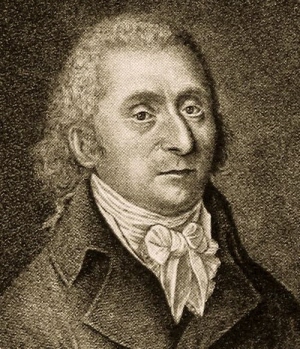
Franz Anton Hoffmeister
These publications were the materials purchased by an increasingly large number of amateur, gentlemen flutists whose appetite for chamber music, ability to afford the purchase of instruments and music, and popular interest did not appear to extend beyond the now very standardized size of concert flute. When this was where the market for successful music publication lay, there is little wonder that smaller (or larger) flutes were largely forgotten in the commercial race to capture the riches of this dilettante market.
However, when Hoffmeister composed La feste della Pace 1791, a later and substantial symphony in G major, it was in commemoration of the peace treaty signed in 1791 after a prolonged period of war between the Holy Roman Emperor, Leopold II from Vienna and the Sultan of Turkey. In the fourth movement entitled Turchesco, the piccolo appears prominently along with the Turkish percussion instruments of cymbals, bass drum and triangle.
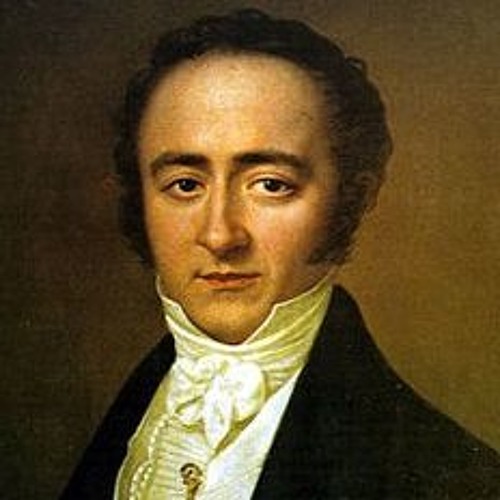
Franz Xaver Süssmayr
The piccolo appears again in another Turkish symphony at the hand of a composer whose only claim to fame at present is his completion of Mozart’s Requiem. Franz Xavier Süssmayr (1766-1803), a pupil of both Salieri and Mozart, focused his career (as did many composers of the time) upon the music of the theatre. Holding the position of composer and conductor of the Kärntnertor Court Theatre in Vienna, he composed several operas, including one based on a Turkish theme, Soliman der Zweite (1799) as well as a previous opera for a Prague theatre entitled Il Turco in Italia (1794). At some point in his short, thirty-six year life, Süssmayr diverted his attention towards composing a four movement Sinfonia Turchesca in C Major which, of course, included the piccolo.
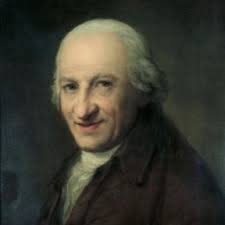
Freidrich Witt
Composed in 1808, the same year Beethoven’s Fifth and Sixth Symphonies were first publicly aired, was the Symphony No. 6 “Sinfonie turque” in A minor of Friedrich Witt (1770-1836). Although Witt’s output in the areas of opera, oratorio, sacred music, symphonies, concerti (including one for flute) was considerable and his writing fluid and intelligent, his name is veritably unknown today. For piccolo players this certainly should not remain so, for Witt’s Symphony No. 6 is a musically significant four movement composition in the classical/early romantic genre that presents the flauto piccolo as a capable participant and occasional soloist in all but the second movement. Yet while this work is a sparkling jewel of strong orchestral writing, and clearly an important instance of piccolo writing in a symphony (certainly not deserving of its complete absence from current concert halls), it, like the Süssmayr, has no currently published edition of the score making it readily available to university or public music libraries.
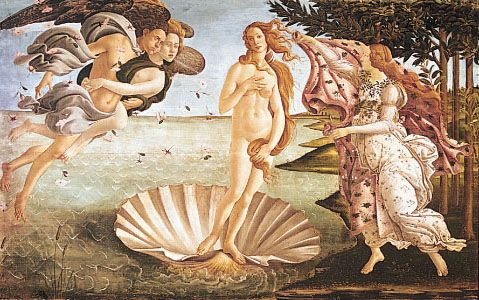
Boticelli – The Birth of Venus
Thus it is that the “glorious moment,” so often referred to in the symphonic programme notes for the finale of Beethoven’s Fifth Symphony, of the arrival of a debutante piccolo escorted by three noble freshman trombones and a fledgling contrabassoon, is obviously an erroneously constructed myth. From the evidence, it becomes clear that the notion of a fully-formed piccolo first appearing upon the symphonic scene in Beethoven’s iconic masterpiece is just a romantic fiction and no more to be believed than Botticelli’s depiction of a fully-grown woman emerging from the shell in his Birth of Venus. Even if the vast operatic repertoire, the multiple minuets and German Dances, and the overtures, symphonies, and marches produced during the French Revolution were ignored, there are still at least three complete classical symphonies, predating 1807, that specifically include the small transverse flute, as well as Witt’s 1808 Sinfonie turque of the same première year as Beethoven’s fifth. All of these works employ the piccolo more extensively than in Beethoven’s three symphonies that do so, if only sparingly.
While certainly it is less of a heroic notion to claim passage into the symphony with the work of composers whose rank in The Great Western Canon may be considerably lower than that of Beethoven, it is important to acknowledge that a history, a repertoire and an identity exist for the piccolo well before 1807. How many piccolo players over how many years have remained content to romanticize about Beethoven’s “glorious moment” and thereby have denied the tiny traverso the discovery and claiming of its proper and rightful heritage? The piccolo’s genesis comes not with a simple answer of “Beethoven”; this small transverse flute that extends its existence well before Beethoven’s birth, deserves better research from its historians and much more earnest curiosity from its players.
Illustrations:
(Jean-Baptiste) Martin one-keyed piccolo in D (C)**, boxwood with one brass key. La Couture, France, pre 1826. Collection: Nancy Nourse. This is probably the style of instrument used by the performers of Rameau operas and by Buffardin.
Anonymous one-keyed piccolo in D (C)**, ebony with ivory rings and additional corps de rechange. Dresden, Germany, late 18thcentury. D.C. Miller Collection, Library of Congress. Photo: Nancy Nourse. This might be the type of instrument used in the early classical symphonies that included an octave flute.
Johann Baptist Rudhard five-keyed piccolo in D (C)**, boxwood with ivory crown and ferrules and five brass keys for C, Bb, G#, short F, D#. Stuttgart. Germany, pre 1863. Collection: Nancy Nourse. This type of multiple-keyed instrument is likely too modern to have been used for original performances of the earliest symphonies employing small transverse flutes.
Notes:
* Vivaldi’s three “Piccolo” Concertos, often performed on the modern piccolo, were most likely composed for some type of recorder-like instrument. The technical difficulties of these pieces, two in the key of C and one in A minor, already considerably challenging in the faster movements, become even more so in these awkward tonalities for the octave traverso whose natural scale is that of D major.
** One-keyed and simple system flutes were usually pitched in the natural key of D major, but generally are regarded as concert pitch, or “C” instruments in modern A-440 pitch nomenclature. Therefore the pitches of the above concert pitch instruments are listed as in D (C).
References:
- Key, Susan. (2005). Los Angeles Philharmonic.
- Anderson, Don. (2005). Arkansas Symphony Orchestra.
- Ledbetter, Steven. (2005). Oklahoma City Philharmonic.
- Wade-Matthews, Max. (2005). The World Encyclopedia of Musical Instruments. London: Anness Publishing, p.147.
- Turner, Barrie Carson. (1996). The Living Flute. London: MacMillan, p.6.
- Toff, Nancy. (1985). The Flute Book. New York: Scribners, p. 68.
- Dombourian-Eby, Zartouhi. (1987). The Piccolo in the Nineteenth Century. Ann Arbor: UMI, p. 1.
- Gippo, Jan and Therese Wacker. (2007). The Complete Piccolo: a Comprehensive Guide to Fingerings, Repertoire, and History. XXXXXXX: Theodore Presser Company, p.31.
- Parsons, Anthony. (1990). Symphonic Birth-pangs of the Trombone.
- Nourse, Nancy. (1981). The Piccolo: an Overview of its History and Instruction. Crane School of Music, SUNY, Potsdam: Master’s thesis, p.45.
- Ibid, p. 44.Powell, Ardall. (2002) The Flute. New Haven: Yale University Press, p.115.
- Powell, Ardall. (2002) The Flute. New Haven: Yale University Press, p.115.
This article originally appeared in International Flute Journal and is used by kind permission.





